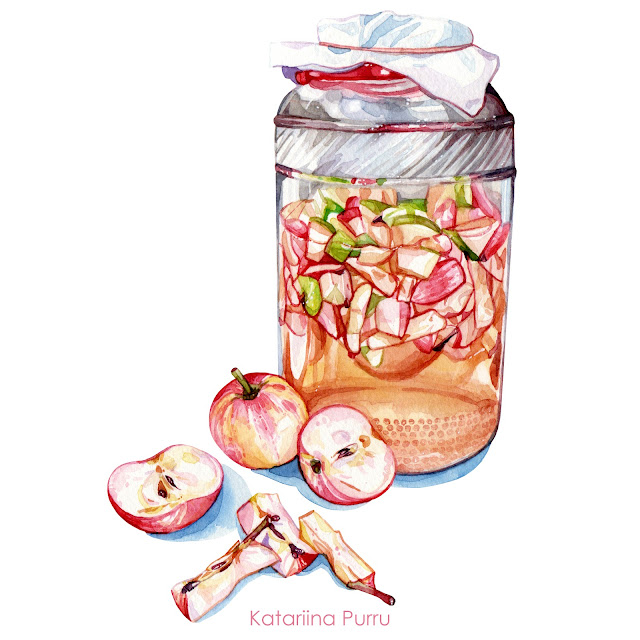If you are making apple jams or apple pies this fall, save your apple scraps to make some lovely homemade apple cider vinegar! Not only is it good, it's easy to make and it has many uses not only in the kitchen, but also in cleaning and skin care. In addition, apple cider vinegar is good for you and your gut health! Plus, it makes a great Christmas gift too.
WHAT YOU NEED
organic apples or apple scraps, like apple peels and cores
2 tbsp of sugar per 1 kg of apples
water
a large glass container
a clean towel or cloth to cover the jar opening
Clean your large glass container. Just in case you can sterilise it with alcohol.
If you are using apple scraps, just add them to the container. If you are using whole apples, wash the apples and chop them into small chunks. Every part of the apple goes in, the skin, cores, skins, seeds, even the stems. Add the sugar.
Pour in water and make sure everything is covered. Leave a bit of airspace at the top. Mix.
Cover the opening of the container with a towel or cloth and secure it with a rubber band.
Place the jar in a warm, dark location, out of direct sunlight.
Mix every day, to avoid your ferment getting moldy. You should begin to see bubbles on the surface within a few days. Try to keep the apple scraps submerged.
Do a smell test. After a few days, the ferment should have a slight vinegary smell. The time for that varies based on how much sugar was used so don't be worried if there isn't a vinegary smell the first time you do a smell test.
As soon as the apples have sank down to the bottom of the container and there is an intense vinegar smell, strain the ferment through a cheesecloth lined colander into a large bowl. Squeeze out as much liquid from the scraps as you can.
Discard the scraps and pour the liquid into a new sterilised container. Cover the container with a towel or cloth and secure with a rubber band.
Place the container into a dark, warm place and let it continue fermenting for 4-6 weeks.
Once you are happy with the flavour, transfer the vinegar into bottles with tight-fitting lids for storage. Store in a relatively cool and dark place or store in the fridge to slow down the additional fermenting that might happen.
If you made sure everything was clean during and after the fermentation, the vinegar should stay good for up to five years. However, the quality and taste will change during that time so try to consume it within two years.
NOTES
If you don't have time to make apple cider vinegar right after your cooking project or you don't have a big amount of scraps yet, you can save the apple scraps and cores and freeze them.
If you don't have your own apple trees, use organic apples. The quality of the apples is really important for this because you will be fermenting the apples for a while and you don't want your project to get moldy. This is why you shouldn't use apples that are rotten or moldy either.
Instead of using apples, you can make your own vinegar using other fruits and berries.
The more sugar you add in the beginning, the more the alcohol will ferment. This means the vinegar will be more tart and you can use the sugar amount to make your vinegar more sour if you want.
Sometimes your vinegar will develop a see-through, jelly like layer on top. This is the SCOBY, also called the mother of vinegar. Don't discard it because you can use it in your next vinegar making to speed up the fermenting process.


Comments
Post a Comment